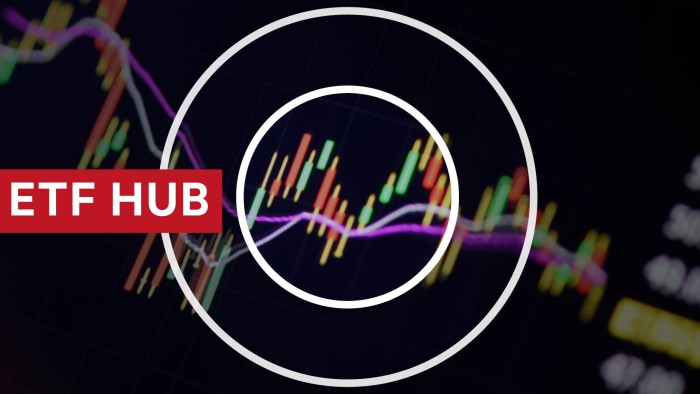How to separate the good from the bad and ugly ESG funds

Roula Khalaf, Editor of the FT, selects her favourite stories in this weekly newsletter.
Environmental, social and governance investing has been one of the hottest sectors of 2020, as investors have flooded into the market looking to immunise their portfolios against climate risk and help promote a sustainable recovery from the pandemic.
But what are people actually getting when they buy an exchange traded fund labelled “ESG”? The answer can vary wildly depending on which fund they choose.
In theory, one might expect an ESG ETF to do a lot of things — such as avoid fossil fuels or invest more heavily in companies that contribute to their communities and treat their employees well.
In practice, however, ESG is very much in the eye of the beholder.
For a clear example of this, look at the top equity funds in the US, as ranked by their ESG scores, according to ETF.com, a widely used specialist information provider. Near the top of the list is an ETF known by its stock ticker, XLU — the State Street Global Advisors’ Utilities Select Sector SPDR Fund, a fund that “tracks a market cap-weighted index of US utilities stocks drawn exclusively from the S&P 500”.
One might wonder how a fund tracking US utility companies can be an ESG fund. Put simply, it isn’t. The term ESG doesn’t even show up in the fund’s description.
So how did it get on the list? It has a very high ESG score from MSCI, the index provider, which ETF.com uses to create its ranking. The high score is probably due to the fact that its top holding is renewable energy company NextEra, and its second and third largest holdings are Duke Energy and Dominion Energy — both of which have committed to moving away from fossil fuels.
However, XLU also holds a number of companies with large coal operations, and the utilities sector overall, according to MSCI’s own data, emits more carbon than any other sector. So it seems unlikely that this ETF ordinarily would be a top pick for a typical ESG investor.
Frustratingly, even if investors look only at ETFs that explicitly carry an ESG label on their own fact sheets, things do not get much clearer.
Broadly speaking, ESG funds can be broken down into three categories, according to Jon Hale, head of sustainability research at Morningstar.
First there are funds he calls “ESG focus” that use ESG analysis as a central aspect of security selection. Next, there are “impact” funds, which set out to achieve a specific environmental or social goal, on top of producing investment returns. And last are sustainable sector funds — which target industries such as renewable energy or energy efficiency.
Inside ETFs

The FT has teamed up with ETF specialist TrackInsight to bring you independent and reliable data alongside our essential news and analysis of everything from market trends and new issues, to risk management and advice on constructing your portfolio. Find out more here
The vast majority of ESG ETFs fall into the first category and track an index that is weighted based on companies’ ESG scores. The process may seem simple enough: the index includes more shares of companies that have strong ESG credentials. But investors still need to look very closely at what they are buying as ESG scores are largely subjective — and not all indices are created with the same goal.
In some cases, ESG ETFs have included securities that explicitly contradict how they were sold to investors. However, when a company with a dodgy ESG record shows up in one of these funds it is typically because the fund has been primarily designed to closely track the broad market.
For an example of this, look at the S&P 500 ESG index. At first glance, investors might be surprised to see names such as ExxonMobil or Chevron on the list. But S&P has not designed the fund to be fossil-free. “The S&P 500 ESG index is designed for investors wishing to integrate ESG factors into their core investments, while not straying far from the overall profile of the S&P 500,” S&P explains in its fact sheet.
In Europe, where ETF investors tend to be large, sophisticated institutional investors, this is not such a big deal. “They’re investing huge amounts of time and due diligence . . . to really understand ESG methodologies,” said Gary Buxton, head of Emea ETFs and indexed strategies at Invesco.
The US is a different story, however, as ETFs are commonly used by retail investors — who all have different ideas of what ESG means and might not expect oil majors to qualify as ESG investments.
As these funds gain more assets and attention from markets, they draw more scrutiny from regulators.
This year, the Securities and Exchange Commission called attention to the problem of inconsistent ESG ratings — and indicated it might clamp down on funds using an ESG label. The European Commission is also working on green fund labelling conventions.
For now, though, it is still the wild west and the onus is on investors to do their homework to separate the good ESG ETFs from the bad and the ugly.
Letter in response to this article:

Comments